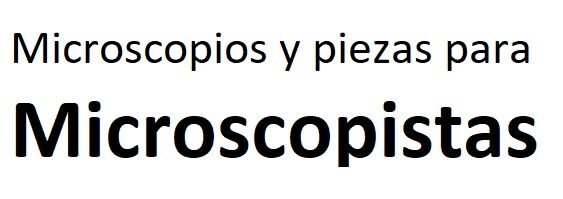When a microscope is delivered it is very important to provide a replacement lamp, in addition to the one installed in the equipment, so that the user can continue working in case it runs out. But it is of great importance to make sure that the lamp is the right one. In this case it is a Zeiss Axioskop 20 with a 6v 20w lamp whose Zeiss reference is 380079-9690-000.
On many lamp sales sites the OSRAM 64250 HLX is said to be an equivalent bulb, but this is not true. I have been told in a German microscope accessories store that the OSRAM replaces the Zeiss that is no longer manufactured and that it is the same. Let’s see why they are not equivalent bulbs.

In this image of the two bulbs we see two fundamental differences. On the one hand, what is most striking is the different shape of the filaments. The Zeiss lamp, on the left, has a flat filament, to fill the field of view, as we will see later. Another fundamental difference refers to the height that the filament reaches with respect to the pins. The difference in height between one and another filament is about 3 mm.
To fully understand the effects of these differences in construction, we must test the microscope with both lamps and focus the filament, in the style of the classical Köhler configuration. To do this, in this Zeiss Axioskop 20 model we must remove a diffuser that is located at the base, between the lamp and the collecting lens, as we see in the photograph.




We place the OSRAM bulb in the microscope’s lamp holder, inserting it in its entirety. We try to focus the filament by regulating the height of the condenser and this is what we see.

In order to see the filament centered in the visual field, we will have to extract the bulb between two and three millimeters. But it is a complicated maneuver because you have to be continuously looking, turning off, cooling, extracting, checking … to obtain a result like this:


To achieve this, you have to turn the microscope over, remove the ground glass filter, and center the filament. This is not something that everyone can do easily.
Now we are going to see how the filament of the Zeiss bulb looks. Placed in the lamp holder normally, as we see in the image below.



Los efectos en una muestra son significativos. Con la bombilla OSRAM sin centrar, es decir, simplemente puesta como la pondría un usuario habitual, el filamento descentrado como hemos visto, y el regulador de iluminación al nivel 2, tendremos esta imagen. The effects in a sample are significant. With the OSRAM bulb not centered, that is, simply placed as a regular user would put it, the filament off-center as we have seen, and the lighting regulator at level 2, we will have this image.

To get more lighting we have to raise the regulation to the maximum level. The microscope gets hot and the image is not good either, because the filament is off-center and the light is coming from the right side. We see the sample.

However, with the Zeiss lamp, at lighting level 2, it is uniform, with minimal heating, as seen below:

Serve this small text to convince us that it is very necessary to use the right lamps for each microscope. In the case of the Zeiss Axioskop 20 the dedicated Zeiss bulb 380079-9690-000 cannot be substituted for the OSRAM 64250 HLX, as many stores say. The results are not good because the bulbs are obviously different as seen in the first photograph. Illumination is essential for obtaining good images in microscopy, and halogen illumination begins at the filament of the bulb. If this fails, the entire system will suffer and the quality obtained will be poor, in addition there will be overheating. Suitable flat filament bulbs for the Zeiss Axioskop 20 microscope can be purchased at the Zeiss Shop.
In future posts we will deal with other basic aspects of the regulation of microscopes.
See you soon microscopists.


